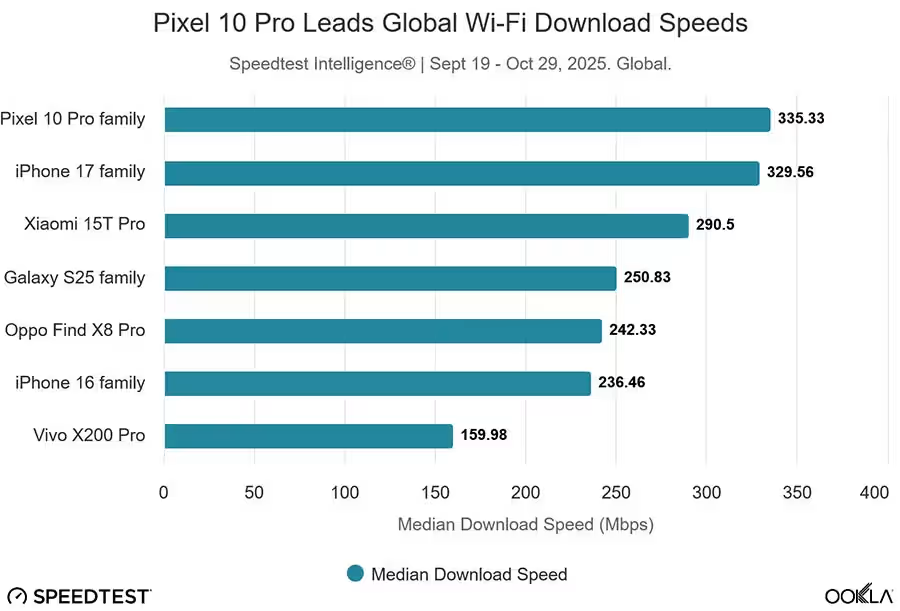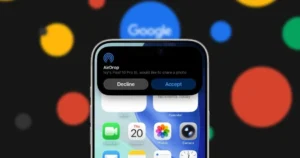If you ever felt like your iPhone 16 was dragging its feet on Wi-Fi, well, the iPhone 17 lineup just gave you a reason to side-eye your old phone.
A new study from Ookla shows that the iPhone 17 family is consistently pulling faster Wi-Fi speeds in the real world. And the most interesting part is that the boost has nothing to do with your internet plan and everything to do with Apple’s new N1 chip.
Let’s break this down in normal human language.
The N1 Chip Is Quietly Doing Heavy Lifting
Apple ditched Broadcom’s Wi-Fi chip for its own N1 silicon this year. On paper, it looked like one of those updates no one gets excited about. But in actual testing, the N1 is delivering noticeably quicker and more stable Wi-Fi performance.
Interesting to note, is the fact that early iPhone 17 adopters reported issues like Wi-Fi drops and more, but Apple has since ironed out the issues through sofwtare updates.
Ookla collected Speedtest data from real users around the world and the iPhone 17 series was hitting significantly faster average speeds than the iPhone 16 models. We’re talking better download and upload numbers everywhere they checked, from the US and UK to India and Japan.
This is not a tiny bump either. It is the type of everyday improvement you feel when your apps load faster, your YouTube stops buffering, and your home Wi-Fi suddenly feels less… moody.
How Much Faster Are We Talking
Here is the highlight. In the United States, the iPhone 17 and iPhone Air models averaged around 409 Mbps, while the iPhone 16 lineup sat closer to 350 Mbps. That is about a 17 percent jump without you doing anything except switching phones.

And yes, these are median real world numbers, not lab tests that only benefit people with perfect routers and perfect homes.
The Wi-Fi 7 Limitation Isn’t the Drama People Expected
People love bringing up the fact that Apple limited the N1 chip to 160 MHz channel bandwidth, half of the 320 MHz maximum possible for Wi-Fi 7. When Apple first confirmed that limitation, social media went into theory mode.
Turns out it does not matter.
Not for normal people.
Not even for most tech enthusiasts.
Ookla’s data basically confirms that the real world difference is negligible. The N1 chip performs so consistently that even with the narrower channel width, it still beats last year’s Broadcom chip with ease.
Pixel 10 Pro Sneaks Ahead Globally
Here is the fun twist. The only phone that slightly beats the iPhone 17 series in global Wi-Fi speeds is the Google Pixel 10 Pro. It is ahead by a small margin, nothing worth chest thumping about, but enough for Android fans to tweet about.

Still, the iPhone 17 lineup is performing exactly the way Apple suggested it would. Steadier speeds, faster averages, and less Wi-Fi drama overall.
Should You Upgrade for the Wi-Fi Boost
If you are coming from an iPhone 15 or older, the jump is absolutely noticeable. If you own an iPhone 16 and you constantly rely on Wi-Fi for gaming, streaming, big file transfers, or heavy multitasking, then yes, this is one of those improvements that you appreciate more over time.
The N1 chip is not about flashy peak speeds. It is about giving you a smoother baseline experience. And honestly, I think that is more valuable than theoretical maximums most people never hit anyway.
So yes, the numbers are in. The iPhone 17’s Wi-Fi game is stronger. Your router might stay the same, but your internet experience definitely won’t.







Comments